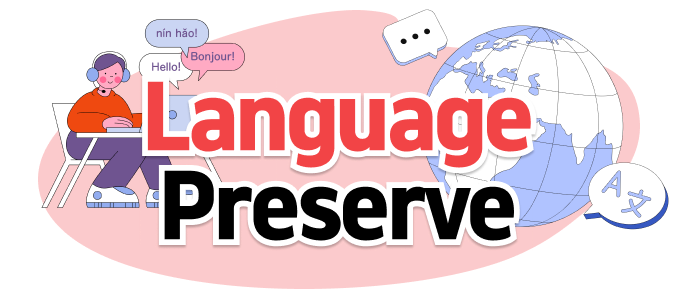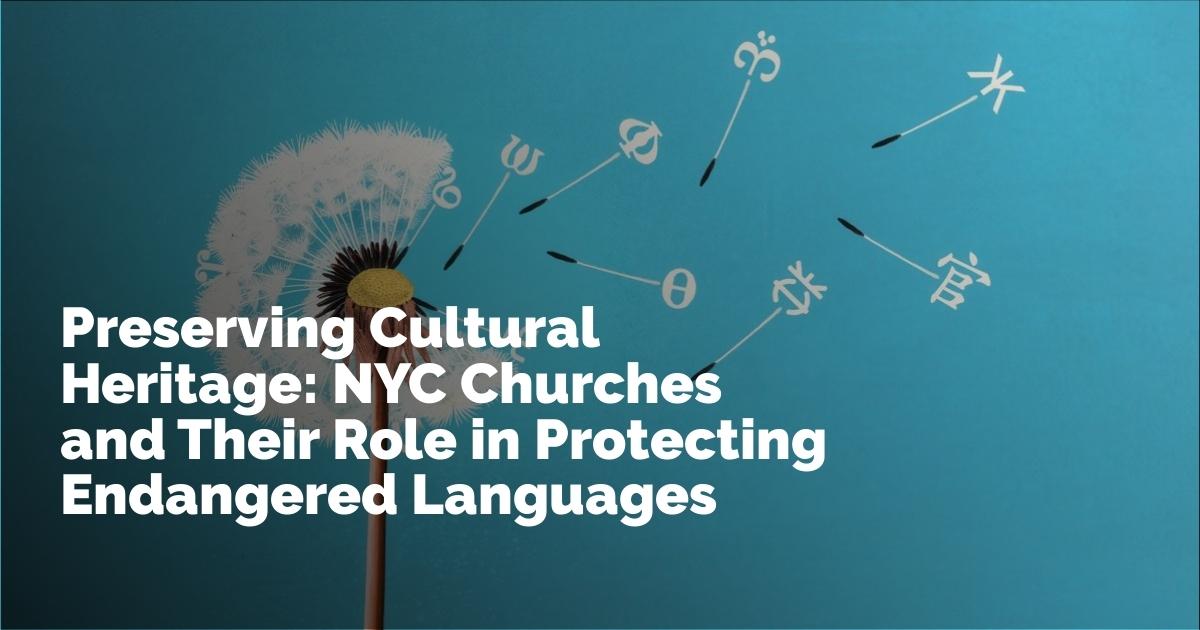NYC Churches as Guardians of Endangered Languages
New York City, one of the world's most vibrant and culturally diverse cities, is not only a melting pot for various ethnic groups and religions but also an unexpected sanctuary for endangered languages. Over the years, NYC has attracted communities from around the globe, making it a unique crucible for cultural preservation, especially through languages that are on the brink of extinction.
A Meeting Point of Global Identities
In NYC, churches have become a pivotal space for the preservation of numerous dialects and languages that are either diminishing in use or entirely endangered. On any given Sunday, you could witness a service conducted in the indigenous Mayan language K’iche’ at a Guatemalan evangelical church in Brooklyn, Syriac liturgies at a South Indian Orthodox church in Queens, or Garifuna services in the Bronx, a language originating from the Caribbean marriage of West African slaves and Indigenous people.
New York stands as the prime example of linguistic diversity, a place where individuals fleeing persecution have found a haven, enabling the survival and flourishing of their dialects. Historical events, such as genocide and diaspora, have brought cultural groups like Armenians, Jews, and the Roma to the city. Their languages, once endangered, now find voices among the city's intricate social fabric.
The Role of NYC Churches
Churches play a crucial role in safeguarding these languages. According to Columbia University linguist Ross Perlin, New York City is home to nearly 700 languages. This is a testament to the city's linguistic variety, significantly outpacing platforms like Google Translate, which supports only a fraction of these.
Within these bastions of worship, the linguistic landscape is rich and diverse. For instance, a Chinese evangelical church in Flushing reflects linguistic diversity within a single ethnicity through the use of Mandarin, Cantonese, Fujianese, and Wenzhounese. Similarly, a worship leader in Manhattan celebrates Coptic, an ancient language connected to early Christianity.
Immigrant Stories Interwoven with Language
New immigrant communities, such as Liberians from Staten Island, part of the largest Liberian diaspora outside West Africa, speak a total of 17 languages within their churches. Other communities, like the Ukrainians and Koryo-saram Koreans of Brooklyn's All Nations Baptist Church, bring unique dialects such as Koryo-mar, illustrating how each linguistic group contributes to NYC’s grand tapestry.
These churches aren't just places of worship; they facilitate a cultural memory that might otherwise fade into oblivion. Whether through hymns sung in traditional languages or multi-lingual sermons, attendees are transported back to their cultural roots while living in an entirely new environment.
The Significance of Language Preservation
The loss of a language often signifies the loss of a unique worldview. Endangered languages offer us different "ways of seeing" the world, as Ross Perlin explains. By preserving these tongues, the identity and culture of their native speakers remain intact. This effort is not limited to religious texts but extends to broader cultural usage.
Translating the Bible into various languages has proved to be a method of preserving some of these endangered dialects. Many of these languages survive in written form only due to the Scriptures. Bible translation initiatives often ignite renewed interest in linguistic use among communities that might have otherwise shifted toward dominant languages such as English.
A Global Effort Enriched by Local Diversity
Christianity's growth across different cultures has historically followed a pattern of linguistic adaptation, going back to early efforts that involved translating texts from Greek into various local languages. This practice has deepened theological understanding and enriched the faith by weaving it into the diverse cultural tapestry it touches.
Furthermore, the emergence of new religious rhythms and expressions as Christianity encounters fresh cultural contexts mirrors the immigrant experience—between familiar and new homes, between preserving ancient languages and adapting to dominant ones.
A Community-Based Approach to Linguistic Preservation
The Endangered Language Alliance (ELA), co-led by Perlin, has been documenting these unique languages spoken in NYC, often found in the city's outer boroughs. These small congregations, in essence, form the unseen network propagating linguistic diversity.
The ELA’s efforts to map and archive these languages highlight their origins and present usages. For instance, Guarani, a native language of Paraguay, finds a place in Queens, while restaurants and community gatherings offer further venues for endangered tongues.
Religious Freedom as a Pillar of Linguistic Diversity
In NYC, the freedom of religion allows individuals to celebrate their native cultures openly, a luxury not always available in their countries of origin. Every Christian denomination is represented, serving as cultural sanctuaries where traditional languages can be celebrated and passed on.
Groups like the Garifuna Mennonite church in the Bronx perpetuate these tongues, with cultural activities and even beauty contests emphasizing language skills. Events like the Hispanic Heritage Day parade showcase the rich tapestry of languages through community involvement, underscoring the integral role churches play in this ecological niche.
A Broader American Narrative
While NYC remains a focal point, other American cities such as Nashville and Tulsa are also becoming shelters for minority languages, integrating into their urban fabric. NYC’s status as a historical refuge echoes back centuries, as evidenced by varied languages among early settlers.
Churches in the past, such as a Brooklyn Presbyterian church’s use of the Iroquois dialect Mohawk, have highlighted this rich linguistic heritage. Today, this cultural momentum persists, though now the focus has partly shifted from print to oral traditions, with conversations in rare languages occurring in the most ordinary settings.
Future Prospects and Challenges
Preserving languages in NYC is a testament to the city’s resilience and the adaptive spirit of its immigrant population. While dominant languages like English perpetuate as the lingua franca, they coexist rather than replace these ancestral tongues in the city’s complex linguistic landscape.
Through dedicated efforts to provide spaces like All Nations Baptist Church for linguistic expression, NYC continues to be a beacon of diversity. Though challenges persist, the work of community-driven institutions and cultural events has steadily maintained the importance and relevance of these languages.
In the face of global language decline, NYC's churches stand out for their organic contribution to linguistic diversity, ensuring that these "ways of seeing" not only survive but thrive amidst the city's constant evolution.
출처 : Original Source

